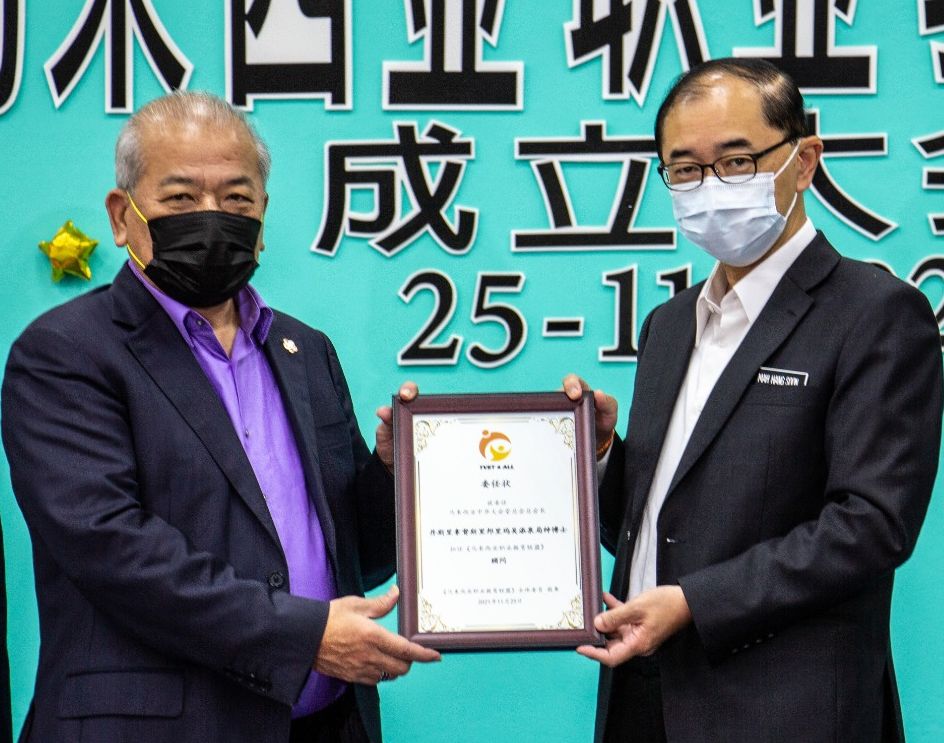KUALA LUMPUR: The Federation of Chinese Associations Malaysia (Huazong) has proposed for an “education corridor” to be set up between Malaysia and China.
This is to allow overseas students from the two countries to resume or to complete their studies, as soon as possible.
Its President, Tan Sri T.C Goh said this is appropriate since the government has recently allowed various economic sectors in the country to resume operations, besides introducing the Vaccinated Travel Lane (VTL) programme between Malaysia and those countries which have an improved Covid-19 situation.
He said this while speaking at the official launching of the “Malaysia TVET Alliance” established by the Merdeka Education Centre (MEC), at its Administrative Building, in Kajang, on Thursday. Also in attendance were, Deputy Education Minister, Datuk Mah Hang Soon, Tan Chin Yim, the Convenor of Malaysia TVET Alliance cum Executive Director of MEC, its Board Chairman Zhao Shen Ru and Tan Sri Lim Hock San, President of The Federation of Hokkien Associations Malaysia, among others.
TVET stands for “Technical and Vocational Education Training”.
Goh who is also an Advisor for the Malaysia TVET Alliance noted that, since the Covid-19 pandemic hit, Malaysian students who had earlier enrolled in universities in China or returned to Malaysia for holidays, are unable to travel to China; some of them had no choice but to make do with distant online studies, which would certainly have an impact on the progress of their studies.
“We in Huazong too have received numerous complaints from affected students and parents on this issue, and we also raised the issue during our recent meeting and dialogue with Chinese Ambassador to Malaysia, Ouyang Yujing who then promised to look into it,” he said.
He observed that China’s high-standard academic and vocational education and excellent learning environment has made China a leading education hub in Asia, as well as a preferred destination for Malaysian students to further their studies. Statistics as of 2019 revealed that the number of Malaysian students studying in China was close to 10,000 students. The number of Malaysian students going to China for further studies continued to rise in recent years, with more than 1,000 students enrolling into higher learning institutions there, each year.
He thus hoped such an initiative like “education corridor” could be established between Malaysia and China, so as to allow overseas students of the two countries to resume and/or to complete their studies, soonest possible.
Goh who is also President of the Federation of Chinese Associations Sabah (FCAS) also expressed his full support for the setting up of the Malaysia TVET Alliance, which is supported by more than 10 organisations in Malaysia, and marked a new milestone in the development of vocational education in Malaysia.
He also described the said initiative as being visionary and forward looking, with the chief aim of providing affordable yet quality and professional vocational education for Malaysians.
He also commended the leadership of MEC for their tireless commitment and contributions, all these years, especially for providing full scholarship to the needy and deserving students to further their studies in various vocational colleges in China. The scholarship among others covered the tuition fees, lodging, and living allowance of the recipients, until they complete their studies.
He pointed out that vocational or technical education is an important component of the national education system, throughout the world. Unfortunately, due to a skewed societal view, it has been regarded as a “low-grade education” and much neglected by the parents.
“This is unreasonable and should be corrected,” he said.
He opined that vocational education should be parallel with other forms of education, citing that in Germany about 70% of its students made vocational education their first choice. This probably explained why Germany had always been a technological and industrial powerhouse all these years.
He further noted that the Chinese government in its education development plan entitled “Education Modernisation 2035” released last year, clearly underlined its determination to ramp up development of vocational education, towards pushing China to become the largest economy and manufacturing country in the world.
Goh thus opined that Malaysia too should follow China’s footsteps in this direction, especially towards achieving Industrial Revolution 4.0 (Industry 4.0), besides expediting its economic recovery, which would certainly require a huge number of vocational talents and skilled workers to achieve such a grand vision.
Meanwhile, he welcomed the government’s allocation of RM6.6 billion in the Budget 2022, for the implementation of the Technical and Vocational Education and Training (TVET) programme.
He noted that the said initiative covers 87 vocational schools in the country, with the aim of absorbing 70% of the graduates into the job market, 20% to continue with further studies, and the remaining 10% to start their own career. It was encouraging to note that, as of 31 October this year, 98.29% of the graduates from these schools either have been employed, continued with their further studies, or become young entrepreneurs, where the number is as high as 20%, which is double the 10% target set earlier.-pr/BNN






